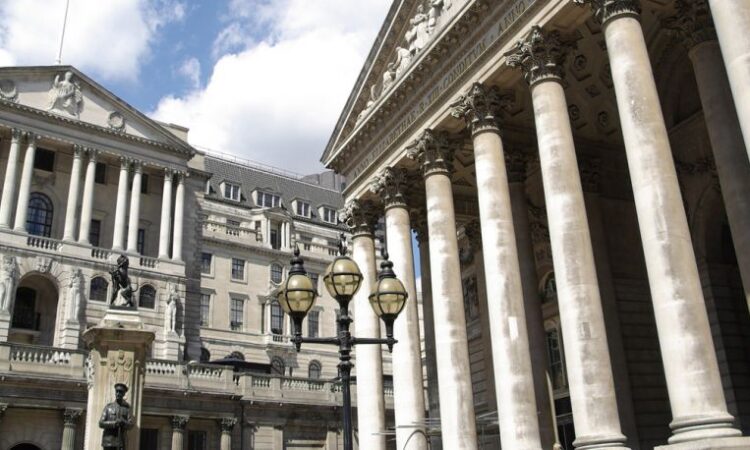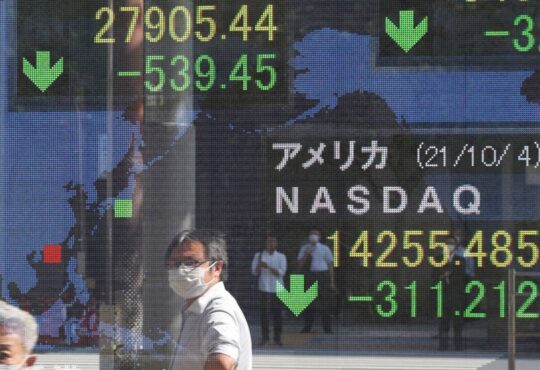
The Bank of England’s (BoE) 50 basis point hike in interest rates in June shocked financial markets. Not only did interest rates rise to their highest level since 2008, but back in early May, the Governor of the BoE, Andrew Bailey, said that we could be near the peak for interest rates.
As we move towards the second half of the year, UK inflation is still higher than the Eurozone and the US, and our borrowing and mortgage rates are surging. This comes even though the BoE has hiked interest rates 13 times and was the first of the major central banks to start tightening rates back in December 2021.
So, why aren’t higher rates working to tame inflation?
This article isn’t personal advice. If you’re not sure whether a course of action is right for you, ask for financial advice. All investments can fall as well as rise in value, so you could get back less than you invest.
Kathleen Brooks is Founder of Minerva Analysis, a market analysis company. Hargreaves Lansdown may not share the views of the author.
UK inflation vs the US and Europe – how do we stack up?
In the eight years leading up to the pandemic in 2020, inflation rose by 14% in the UK. In contrast, in the two years after the pandemic, inflation has risen by 18%. And higher prices don’t seem to be going away anytime soon.
The UK’s rate of inflation is double that of the US’s and significantly higher than Europe’s rate. UK inflation hit 8.7% in May. In the Eurozone, headline inflation was 6.1% and in the US, headline inflation was only 4%.
Likewise, British wage growth is also outstripping the US and the Eurozone.
UK wage growth was 7.2% in the three months to April. In contrast, wage growth in the US and the Eurozone has edged lower in recent months at 5% and 4.6% respectively.
The recent rapid rise in prices is concerning, not least because as our peers seem to have managed to get inflation under control, price growth is still running hot in the UK.
Why is UK inflation so high?
This is a complex issue, and there are no easy answers. But a succinct explanation is that the UK is facing a US-style labour market crisis, and a European-style energy market crisis. Hence, we have double the number of problems that our peers have, and right now higher interest rates don’t seem to be effective.
This suggests two things.
Firstly, interest rates aren’t quite yet the solution for inflation that some thought they would be, and secondly, the UK’s economy is facing some unique challenges.
Why the UK is vulnerable to food price inflation
Rapidly rising food prices have been a major contributor to inflation growth in the UK. In the 12 months to May 2023, UK food price inflation rose by 18.4%. This is lower than the 19.1% increase recorded in April, but still unacceptably high.
Food and non-alcoholic beverages make up nearly 10% of the UK’s consumer price index (CPI) basket. So, when food prices are high, inflation is high.
The UK has the highest rate of inflation in the G7, as you can see in the chart below and food prices have been particularly high in the UK.
Startlingly, UK food price growth was amongst the slowest in the G7 before the pandemic. However, this trend has now reversed, which is feeding our sticky inflation problem.
While most food commodities have been on a downward trend since the second half of 2022, these haven’t filtered down to UK prices.
The Office of National Statistics (ONS) put this down to three factors.
- Transmission lags – some suppliers might be tied into long-term contracts with supermarkets, which reduces the scope for changes in prices.
- Profit margins – since 2021, food input prices have outpaced growth in food output prices. This trend has recently reversed, however, companies might not pass on these savings to consumers as they try to re-build their margins.
- Imports – the UK is heavily reliant on food imports, and the price of food imports has risen at twice the rate of food that’s produced domestically. In contrast to the UK, countries in the European Union, for example Italy and Spain, produce more of their own food. This is one reason why they’ve seen lower food price inflation.
CPI year-on-year across G7 nations
Source: Bloomberg, 31/05/2023.
Another reason for our inflation problem, according to the ONS, is the structure of our energy and gas markets.
The price cap that’s in place for energy and gas is updated every six months, which means that the UK has been slow to respond to falling energy prices. In contrast, electricity and gas prices are updated more frequently in some other G7 economies.
The ONS also points out that the UK is a net importer of both food and energy. This makes the value of the pound an important component of inflation.
Between mid-2021 and September 2022, the pound fell approx. 24% on a broad basis. While sterling has regained roughly 70% of that decline, weakness in the pound makes imports more expensive and weighs on inflation.
The UK’s food and energy price inflation is largely due to structural factors beyond the BoE’s control. So, it’s no surprise why interest rates haven’t been effective at taming headline inflation so far.
How long do interest rate hikes take to work?
Standard thinking has been that interest rates can take up to 18 months to feed through to taming inflation. However, research from the Federal Reserve Bank of Kansas City disputes this theory.
They argue that the introduction of new policy tools, including forward guidance and balance sheet policy after the financial crisis, have shortened the lag it takes for monetary policy to work its magic.
Researchers looked at the Federal Funds rate, and created a proxy Federal Funds rate, which uses public and private borrowing rates – mortgage rates etc – to highlight how quickly monetary policy filters through to the real economy.
It found that the ‘proxy’ Federal Funds rate has been consistently above the actual Federal Funds rate during periods of monetary policy tightening in the US. They conclude that because of these policy changes, the lags in transmission from monetary policy to inflation might be shorter today than it was pre-2009.
There’s evidence that this is true in the UK.
As you can see in the chart below, the average two-year mortgage rate is significantly higher than the actual BoE base rate. The official mortgage data is collated every month, so it doesn’t yet reflect the June rate rise from the BoE. That means the UK’s two-year mortgage rate is likely to rise even further, although of course there are no guarantees, only time will tell.
UK average two-year fixed mortgage rate (monthly) and BoE base rate
Source: Bloomberg, 26/06/2023.
But why hasn’t the jump in mortgage rates had more of an impact on inflation?
The answer is simple. Only 0.2% of the population must refinance their mortgage each month. That means, even if rates stay at this level for the next six months, it will hit approximately 1.2% of households.
While higher mortgage rates are a huge burden for the 1.2% of households that need to refinance over the next six months, it’s still small in absolute terms.
This analysis doesn’t consider the impact of higher borrowing rates on businesses. However, it highlights how hard it is for interest rates to impact an economy.
UK interest rates rise to 5% – what it means for stock markets, mortgages and annuities
The BoE – ditch the forecasts
The Bank’s credibility is now on the line, after another inflation reading that was higher than forecast – the May inflation reading was 0.3% higher. Wage growth was also higher than predicted, by 0.5%.
The BoE has admitted it’s underestimated employment growth and the extent that the market expects it to hike interest rates. What it does next is going to be under more scrutiny than before.
So, what can the BoE do next?
The one thing that the Bank can do in response to its flawed forecasts is to ignore them.
After the Bank hiked interest rates by 50 basis points in June, its accompanying statement said that the MPC will continue to monitor indicators of persistent inflation in the economy.
This suggests the Bank will adopt the approach of other central banks and rely on the latest economic data before they make future decisions about monetary policy.
Currently, financial markets are expecting UK interest rates to rise above 6% by February 2024. This is the equivalent of another four or five 25 basis point rate hikes. However, with a bit of help from the government and the private sector, large further rate rises might not be needed as these steps could help inflation cool in the coming months.
- Higher savings rates – the BoE and the government should be putting pressure on UK banks to make sure they increase savings rates in line with interest rates. This could entice more people who have excess cash to save their money, rather than spend it, which could help dampen inflation pressure.
- Price controls – in a highly unusual move, the UK’s chancellor of the exchequer has met with industry regulators to ask about any companies that could be exploiting inflation to raise prices.
- Fiscal restraint – reports suggest that the prime minister could limit public sector pay rises this year to combat inflation.
The UK’s inflation problems are complicated and interest rates aren’t the only tool needed to stamp out price growth.
The BoE and the government need luck to try and navigate a soft landing as they attempt to bring UK inflation rates back under control.
Inflation, interest rates and falling house prices – what you need to consider
Editor’s choice: our weekly email
Sign up to receive the week’s top investment stories from Hargreaves Lansdown
Please correct the following errors before you continue:
Hargreaves Lansdown PLC group companies will usually send you further information by post and/or email about our products and services. If you would prefer not to receive this, please do let us know. We will not sell or trade your personal data.
What did you think of this article?





